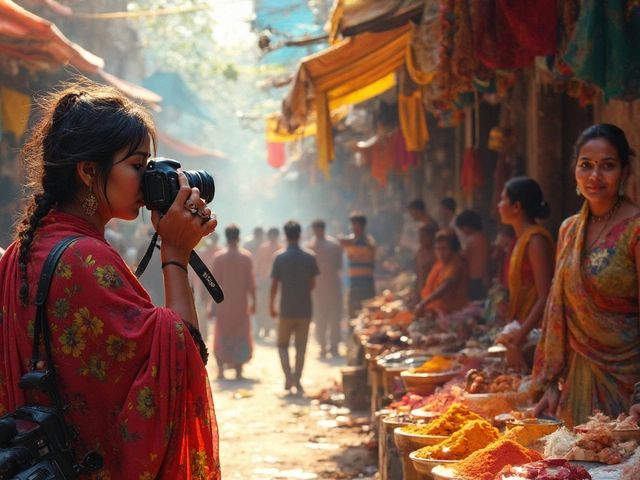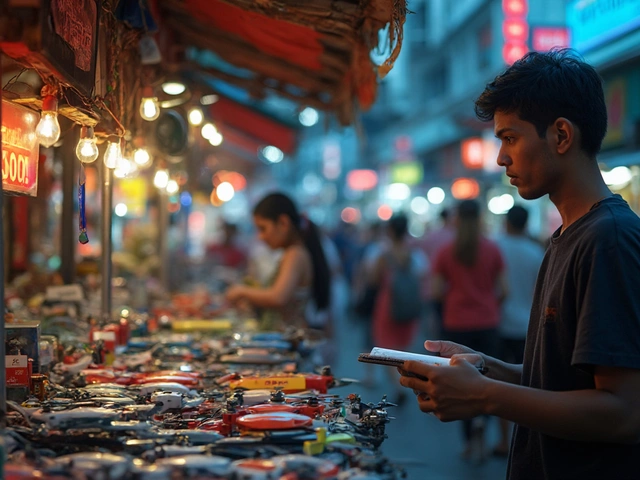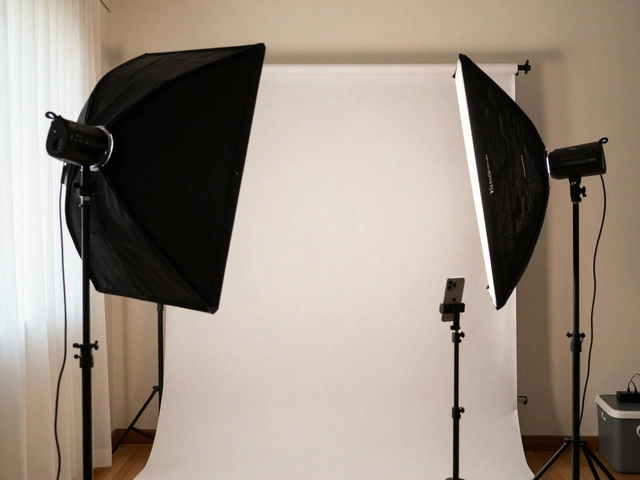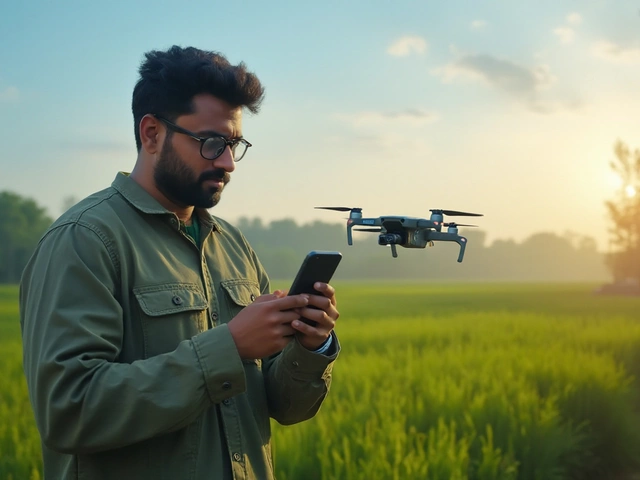If you’ve ever wondered how a photo studio pays the rent when everyone’s snapping free pics on their phones, you’re not alone. Studios are still alive and making money, even with the phone camera revolution. Their secret? Smart revenue streams and a sharp eye for what people want beyond just a click. Studios are more than just backdrops and ring lights—they’re full-on businesses with lots of ways to stack up income. And if you’re thinking about running your own, or just nosy about how it all works, it helps to see where those dollars actually come from.
The Main Sources of Studio Income
Let’s cut to the chase. Studios rake in cash from a handful of tried-and-true sources, but each one relies on a totally different approach, risk, and customer. First up is session fees. If someone wants to book a spot, whether it’s for headshots, family portraits, or branded product photography, they pay just to get through the door. These fees usually cover the photographer’s time, access to studio gear, and the chance to use fancy lighting or props. Session fees aren’t always the biggest money-maker, but they’re a reliable way to cover the studio’s fixed costs—even if nobody buys prints afterward.
Next, there’s product sales. This is where things get interesting. Studios upsell hard with premium print packages, albums, digital downloads, and framed enlargements. Stats from 2024 showed that over 60% of portrait studios made at least half their revenue from add-on print sales, not session fees alone. The trick? Make the shots look so good that people just can’t say no to turning their newborn’s grin into a wall-sized canvas.
Weddings and events are another goldmine. Many studios partner with venues or planners to book full-day coverage. For this, clients pay a premium because they want every angle covered, edited photos, and sometimes slick wedding albums. In the U.S., the average studio wedding package cost hit $2,800 in 2024 according to The Knot, and that’s before clients add extra prints or thank-you card designs. Not bad for a weekend’s work—if you can handle the stress!
Don’t forget about commercial gigs. Businesses constantly need product shots, staff headshots, advertising images, and social media content. Studios that make connections with local companies or creative agencies can land repeat contracts, sometimes on a retainer. One medium-sized commercial studio in Chicago cleared $350,000 in 2023 just doing catalogs and e-commerce shoots. That’s a whole different ballgame than holiday card photos, but the results are steady.
Some studios rent out space to freelance photographers, content creators, or even filmmakers. By charging by the hour—or the day—they fill up the calendar with outside work, often during slow periods or off-hours. It’s like Airbnb, but with camera gear instead of spare bedrooms. Plus, extra revenue streams pop up when studio owners host workshops, offer photo classes, or partner with brands for sponsored shoots.
| Studio Revenue Stream | Share of Total Income (Avg.) |
|---|---|
| Session Fees | 25% |
| Product/Print Sales | 35% |
| Weddings & Events | 20% |
| Commercial/Corporate Work | 15% |
| Studio Rental/Workshops | 5% |
But it’s not all smooth sailing. Studios juggle lots of fixed costs—rent, insurance, equipment, editing, and marketing. That’s why experienced owners get creative and never let the space go idle. Revenue isn’t just about photos; it’s about how you package, present, and upsell the whole experience.

Smart Ways Studios Boost Profits and Stay Ahead
The photography world is crowded, right? So, the smartest studios do more than just take pretty pictures. They focus on customer experience, build loyal followings, and use clever marketing tricks. If you look at the most profitable studios, they almost always offer something extra—maybe it’s same-day delivery of digital files, custom photo retouching, or exclusive access to limited-edition backdrops. Surprise perks matter.
Loyalty programs are a secret weapon. Some studios reward repeat customers with free mini-sessions or significant discounts after a certain number of bookings. One maternity and newborn studio in Austin runs a "first birthday club," offering special rates and a bonus cake smash set if parents stick with them for a year. That turns one-off clients into lifelong fans—and the average family spends more over time.
Another big tip: partnerships. Savvy studio owners team up with hair and makeup artists, florists, or event planners, creating all-in-one packages. This not only makes things easier for clients but also brings in cross-referrals. For example, a headshot studio might partner with a women’s business group, offering LinkedIn-ready portraits at a group rate. Both sides win, and the studio fills their weekday slots, which are usually tough times to book.
Online presence is non-negotiable now. Booking calendars, sample galleries, reviews on Google and Instagram—they all drive sales. Studios that invest time in SEO and regular posting can fill up their schedules months in advance. According to a survey by PhotoShelter in late 2023, studios with active social media profiles saw 40% higher booking rates than those with just a dusty old website. Your online shop window matters as much as your physical one.
Upselling is practically an art. Photographers show off high-end print samples right after the shoot, so customers can see and touch the possibilities. One studio out in Seattle even puts clients’ best shots on a big-screen slideshow, turning the photo reveal into a real emotion-packed event. When people see their own faces blown up on the wall, it’s hard not to splurge a little. Studios report that this approach can double rate of print or digital add-on sales compared to just sending an online gallery.
Add in exclusive seasonal offers—think holiday cards, graduation promos, or themed mini-shoot days—and the bookings keep rolling in year-round. Some studios sell photo merchandise: mugs, calendars, phone cases. These are fun impulse buys, especially in gift-giving seasons. They might seem small, but they can add up to thousands over a year.
Efficiency behind the scenes makes a difference too. Studios that use cloud-based editing and storage cut down labor hours. Automated booking tools eliminate phone tag and schedule mishaps. Even little upgrades, like wireless file transfer or quick pay options, keep clients happy and business running smooth—so the team spends more time shooting and less time scrambling. Every minute saved is more money made.
Of course, word of mouth is still king. Happy clients talk. Some studios get over half of their new business from referrals—yep, even in the TikTok era. That’s why the best studios never stop following up post-shoot. They send thank you notes, request Google reviews, and toss in a mini-print as a surprise. It all adds up to more buzz and repeat hires.

The Hidden Wins (And Pitfalls) of Studio Money-Making
It’s not all glam and endless profit. Behind every busy studio is a healthy dose of risk and hustle. Rent goes up, equipment breaks, holiday bookings might suddenly vanish if a new virus wave hits. The studios with staying power keep a cash reserve for slow months and always have a plan B. During 2020, a surprising number of studios survived by selling at-home photo kits or running virtual editing workshops when in-person shoots dried up.
Insurance and contracts are the unglamorous side, but super important. Every studio owner hears at least one nightmare about a botched session or equipment disaster. Photographers who skip the paperwork and coverage can lose everything in a single lawsuit or rental snafu. Routine things—like confirming deposits and sending out booking terms—are what keep a business alive when unexpected stuff happens.
Specialization also pays. Niche studios—boudoir, pets, e-commerce, cosplay—often snag clients who want a super-specific look. These folks are quick to pay a premium, since they know exactly what they want and can’t get it just anywhere. Around 30% of profitable studios in 2024 focused on a single type of photography instead of trying to do it all. So, it’s not about casting the widest net, but making the best bait for the right fish.
Licensing content is another shot at extra profit. When studios create killer photos—whether it’s food, fashion, or travel—they can sell or license those images to magazines, ad agencies, or stock photo libraries. It’s not a fast cash flow, but royalties do add up if your work gets used widely. One well-known architectural studio in London earns a steady side income by licensing building shots for real estate brochures every year.
It’s worth mentioning that not every studio wins big. The most common reasons for crash and burn? Poor location (too remote, tough parking), failure to market, not adapting to trends (hello, TikTok and drone shoots), and ignoring costs. Cameras and lighting gear aren’t cheap—and neither are Photoshop and insurance. Even details like keeping props fresh and maintaining backdrops matter. Studios that count every penny and track which services are most popular stay competitive.
So, want to maximize studio profit? Here’s a shortlist of what works right now:
- Upsell every session with premium prints or digital add-ons
- Build strong partnerships for mutual referrals
- Promote everywhere—web, local groups, social media
- Offer seasonal and niche services to stand out
- Never let the studio sit idle—rent out during off-hours
- Track revenue sources and double down on what makes the most
- Keep customers coming back with loyalty perks and surprise bonuses
If you ever wondered how your neighborhood photo studio is still open even when tech keeps changing, it’s because they’re hustling on every front. They know exactly what their customers want—whether it’s a perfect LinkedIn shot or that epic family portrait—and they make it feel worth every penny. That’s how a *studio making money* goes from blurry dream to sharp reality—no filter needed.





